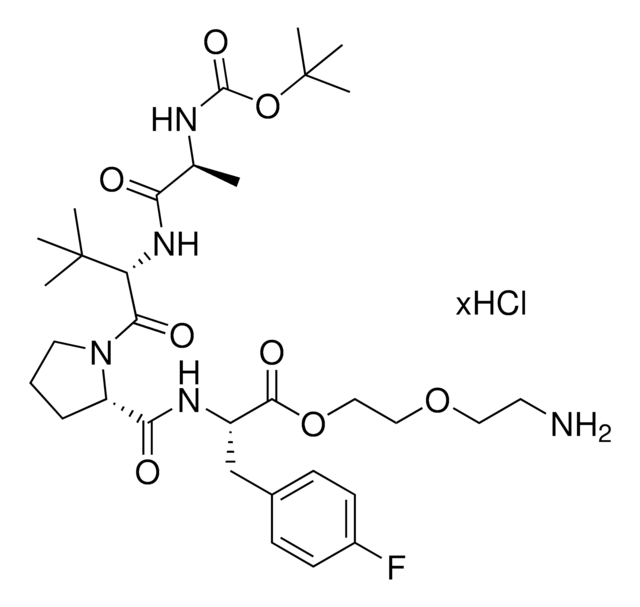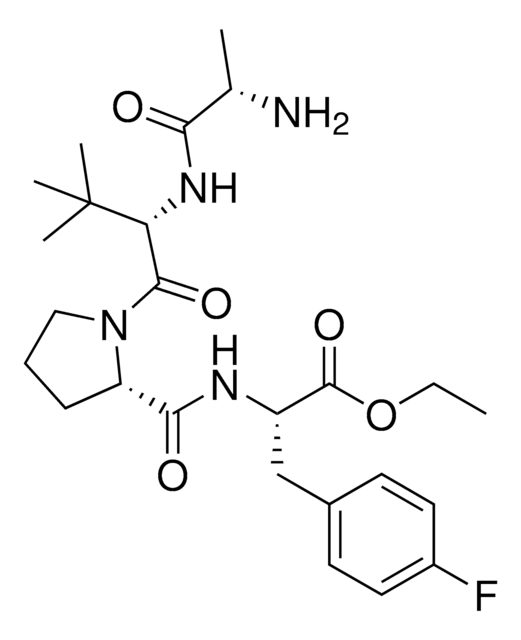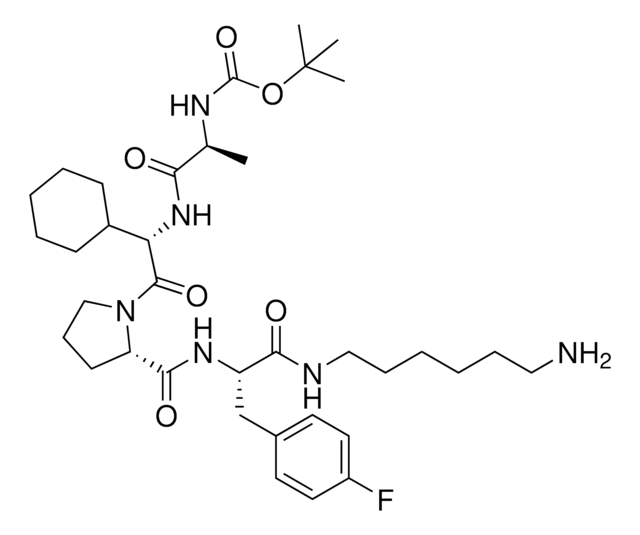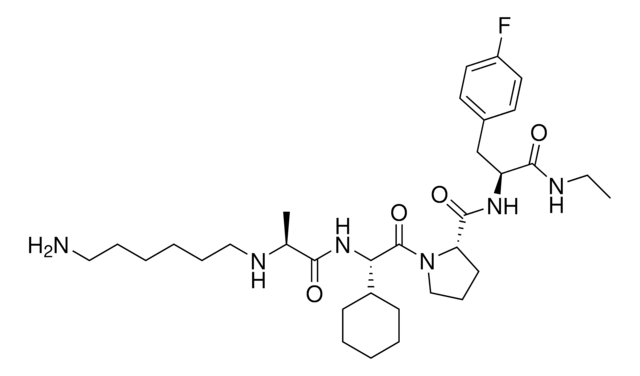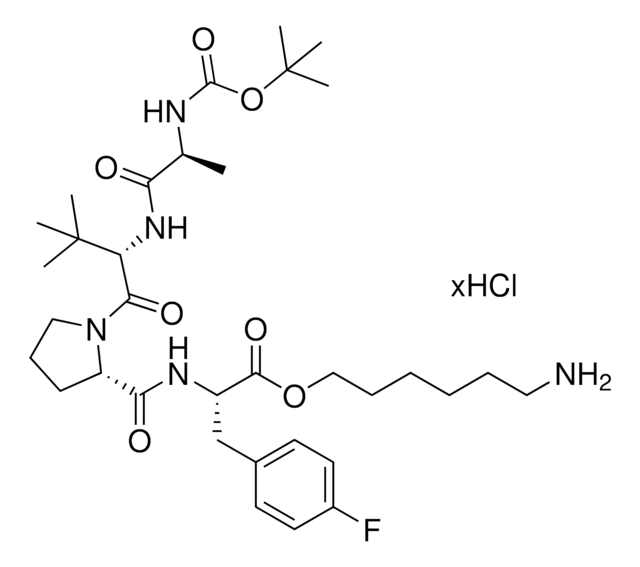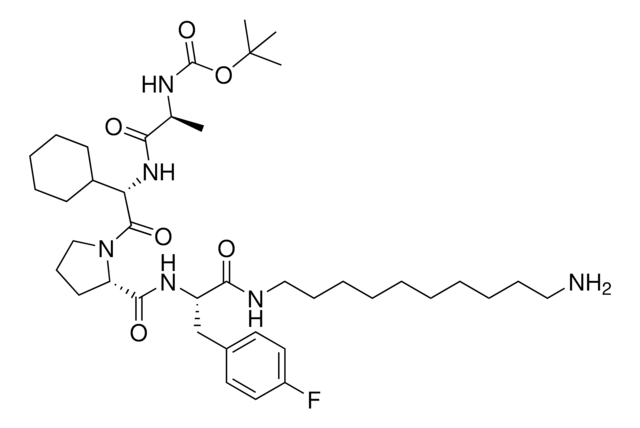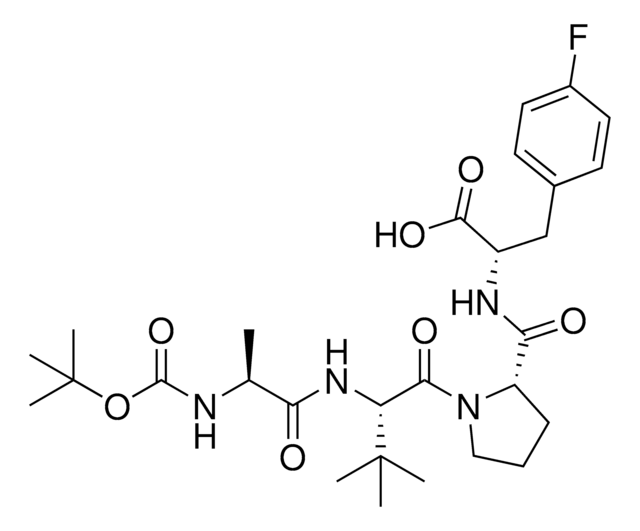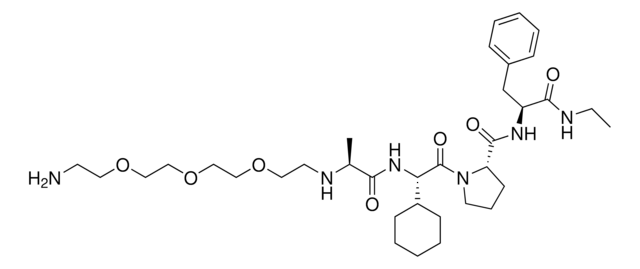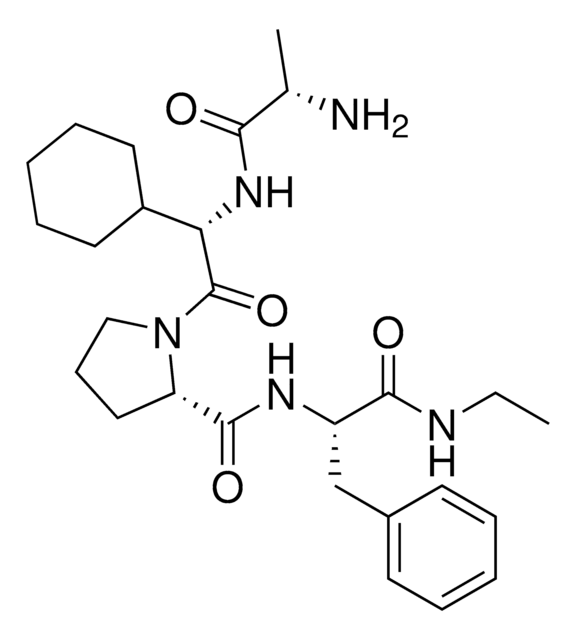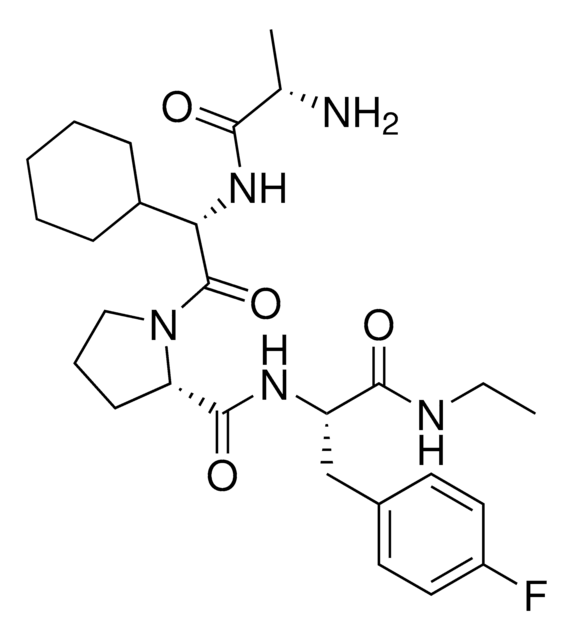917451
A1V2PF1-NHEt-PEG1-NH2
≥95%
Synonym(s):
(S)-1-((S)-2-((S)-2-((2-(2-Aminoethoxy)ethyl)amino)propanamido)-2-cyclohexylacetyl)-N-((S)-1-(ethylamino)-1-oxo-3-phenylpropan-2-yl)pyrrolidine-2-carboxamide, AVP conjugate for IAP-mediated protein degrader development, SNIPER building block
About This Item
Recommended Products
ligand
A1V2PF1
Quality Level
assay
≥95%
form
powder
reaction suitability
reactivity: carboxyl reactive
reagent type: ligand-linker conjugate
functional group
amine
storage temp.
2-8°C
SMILES string
C[C@H](NCCOCCN)C(N[C@H](C(N1CCC[C@H]1C(N[C@H](C(NCC)=O)CC2=CC=C(C=C2)F)=O)=O)C3CCCCC3)=O
InChI key
WETVEUCXJVYEOI-ZYEMSUIVSA-N
Related Categories
Application
Building blocks in this series:
917222 A1V2PF1-NHEt
916943 A1V2PF1-NHEt-C6-NH2
917206 A1V2PF1-NHEt-C10-NH2
917451 A1V2PF1-NHEt-PEG1-NH2
917702 A1V2PF1-NHEt-PEG3-NH2
Technology Spotlight: Degrader Building Blocks with Inhibitor of Apoptosis Protein (IAP) In Silico-Derived Ligands
Other Notes
Legal Information
Related product
Storage Class
11 - Combustible Solids
wgk_germany
WGK 3
flash_point_f
Not applicable
flash_point_c
Not applicable
Choose from one of the most recent versions:
Certificates of Analysis (COA)
It looks like we've run into a problem, but you can still download Certificates of Analysis from our Documents section.
If you need assistance, please contact Customer Support.
Already Own This Product?
Find documentation for the products that you have recently purchased in the Document Library.
Articles
Targeted protein degradation (TPD) is an emerging strategy that uses small molecules to hijack endogenous proteolysis systems to degrade disease-relevant proteins and thus reduce their abundance in cells.
This product is a plate of 80 ligands against the E3 ligase IAP The ligands were designed by ComInnex using a computational approach. Linkers can be added to these ligands allowing attachment to target ligands to create bifunctional targeted protein degraders. The ligands can also be used to discover molecular glues that bring together the IAP E3 ligase and a target.
Protein Degrader Building Blocks are a collection of crosslinker-E3 ligand conjugates with a pendant functional group for covalent linkage to a target ligand.
Our team of scientists has experience in all areas of research including Life Science, Material Science, Chemical Synthesis, Chromatography, Analytical and many others.
Contact Technical Service